 In my last post I reflected on a home learning programme which I undertook with Dylan in the years immediately following his autism diagnosis. In that post I referred to a framework for home learning described by Aboucher and Desforges:
In my last post I reflected on a home learning programme which I undertook with Dylan in the years immediately following his autism diagnosis. In that post I referred to a framework for home learning described by Aboucher and Desforges:
reading, library visits, playing with numbers and letters, playing with shapes, teaching nursery rhymes and singing.
In this post I provide examples of Dylan’s home-based learning within each of these categories. Although Aboucher and Desforges’ framework is not based on a specialist learning environment I think it is equally applicable for an autistic child with a learning disability. As the examples illustrate, however, flexibility is required when interpreting the categories.
a) Reading/library visits
Although Dylan doesn’t ‘read’ he has always loved books. Below are some ways in which Dylan engages with literacy-based activities and my reflections on their possible value.
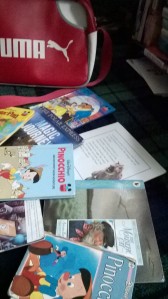 Reading the same book for weeks on end. I used to try and move Dylan on to other texts but later realised that this repetition suits Dylan’s learning style and builds his confidence.
Reading the same book for weeks on end. I used to try and move Dylan on to other texts but later realised that this repetition suits Dylan’s learning style and builds his confidence.- Reading multiple copies of the same book. I have speculated on possible reasons for this here.
- Reading the same page in a particular book. Dylan keeps favourite books open at ‘special pages’. At home he keeps these close at meal time and bath time. I imagine that these pages are comforters for Dylan or that the characters on the page are real to him and are his friends, sharing Dylan’s key activities.
- Turning the pages of a book rapidly, usually from back to front, sometimes while looking away or with eyes closed. I imagine Dylan might be counting or playing memory games.
- Carrying books around without opening or looking at them. There are eight books which go everywhere with Dylan. Dylan doesn’t look at these outside the house; sometimes, when we are in a cafe, I might say ‘why don’t you have a look at one of your books Dylan?’ But he never wants to. Dylan has the books with him not as we might, in order to read at opportune moments, but as comforters perhaps, or because they are friends, or he enjoys their weight.
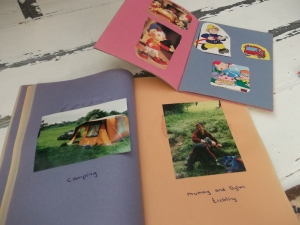 Using books as objects, for example to sit on, lick, or wear on the head. Dylan’s sensory and physical relationship with books as artefacts is a valuable part of his developing literacy. Dylan accepts my standards of care for library books, I think, because he has his own copy of favourite books (which I accept will become wet, dirty and torn).
Using books as objects, for example to sit on, lick, or wear on the head. Dylan’s sensory and physical relationship with books as artefacts is a valuable part of his developing literacy. Dylan accepts my standards of care for library books, I think, because he has his own copy of favourite books (which I accept will become wet, dirty and torn).- Reading homemade books. These can be quite simple: scrapbooks, for example, laminated pages or inserts in plastic sleeves of an A4 folder. The books can have a narrative arc (for example ‘using the toilet’) but more often the books I made for Dylan were simply pages of things which I thought would interest him.
For Dylan ‘reading’ is usually a private activity. This was hard for me to accept, initially, as my expectations and instinct about early literacy were that it should be shared. In time I learned to give Dylan the space he needed however. I developed the following techniques for offering support:
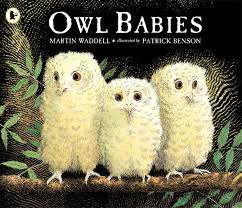 ~ sitting silently next to Dylan with my index finger held out (I discovered that Dylan would take my finger and point to something in the book if he wanted me to name an object or clarify something);
~ sitting silently next to Dylan with my index finger held out (I discovered that Dylan would take my finger and point to something in the book if he wanted me to name an object or clarify something);
~ sitting next to Dylan offering a simple commentary as he turned the pages (talking about the book rather than reading the narrative);
~ sitting at a distance ‘modelling’ reading by turning the pages of a book and using simple language (‘Percy sad’);
~ memorising some of Dylan’s favourite books and speaking these to Dylan at various times of day. In time this triggered him to fetch the book.
There are now a few books which Dylan will allow me to read with him. It is always important, however, that I let Dylan take the lead, e.g. selecting the text and setting the pace for me to read as he turns the pages.
b) Numbers and letters
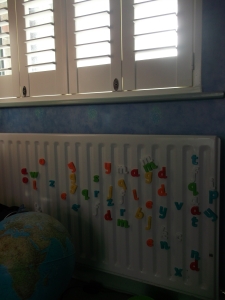 Numbers and letters are abstract symbols. Some children with an autistic spectrum condition are comfortable with this and demonstrate a facility for mathematics or for learning foreign languages. This is not the case for Dylan, however, for whom numbers and letters as symbols have never appeared meaningful.
Numbers and letters are abstract symbols. Some children with an autistic spectrum condition are comfortable with this and demonstrate a facility for mathematics or for learning foreign languages. This is not the case for Dylan, however, for whom numbers and letters as symbols have never appeared meaningful.
At 20 Dylan will identify marks on a page as ‘why-ya’ (writing). He will also tell me that I am ‘why-ya’ if he sees me with a pen or pencil and piece of paper. Interestingly, however, if I am typing at a keyboard he will not identify this as ‘why-ya’ but rather ‘poo’ (computer) which he sees as a different activity entirely. I’m not sure if Dylan connects letters with communication (i.e. whether or not he understands the link between reading and writing). I am even less sure that Dylan associates number symbols (1,2,3 etc) with the thing(s) they represent. Dylan doesn’t have a word for ‘numbers’ and hasn’t ever told me that a symbol is a ‘number’ in the way that he has identified marks on a page as ‘why-ya’. I suspect that, for Dylan, numbers and letters amount to the same thing: abstract marks on a page.
I did a lot of fairly conventional number and letter work as part of Dylan’s home learning programme when he was young. Mostly this involved me trying to teach Dylan to sequence numbers and letters and to copy them. Dylan did not enjoy this work and never showed any real understanding of it. If I had my time again I wouldn’t bother. I continue to try and develop Dylan’s awareness of numbers and letters through alternative approaches, however. Activities which Dylan seems to enjoy and which have had some impact include:
 Counting things in pictures (the windows in Ulm cathedral is a favourite activity) through chant and point. Whenever Dylan pays attention to something I look for objects we can count, e.g. ‘let’s count the stars’.
Counting things in pictures (the windows in Ulm cathedral is a favourite activity) through chant and point. Whenever Dylan pays attention to something I look for objects we can count, e.g. ‘let’s count the stars’.- Playing dominoes (this may be more about matching the shape of the dots than about number but I try to enforce the number link by counting dots when we play).
- Focusing on meaningful sequences of numbers and letters rather than abstract sequences such as the alphabet. The sequences of letters which Dylan recognises currently are D-y-l-a-n and (possibly) m-u-m. It has taken many years of exposure to the letters in Dylan’s name for him to recognise them. Even now I don’t think that Dylan ‘reads’ his name; he likes pointing to the letters on his door and for me to chant them, but he is as likely to indicate them in reverse order (but get cross if I sound them out backwards).
- Gradually replacing familiar pictures with letter sequences. I tried doing this as part of Dylan’s home learning programme by blanking out some of the pictures in his ‘red book’ and in lotto games. On reflection I tried this too early. I should have allowed more time for Dylan to feel confident communicating with photographs, pictures and symbols before moving him onto letters. Attempting letters too early created a sense of failure in Dylan and frustration in me (or perhaps vice-versa). My sense is that Dylan is only now moving into the symbolic stage of communication; I have had some success this year with makaton signs and symbols and have therefore recently introduced the sequence m-u-m.
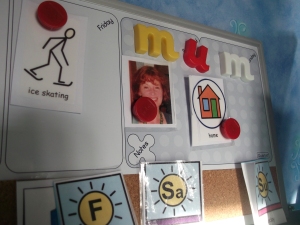 Introducing numbers and letters in a naturalistic and comfortable setting. I have introduced m-u-m on Dylan’s visual timetable board because it’s an object which is important to him, that he is comfortable with, and which he interacts with on a daily basis. For other children and adults this might be DVDs, i-pads, the fridge door etc.
Introducing numbers and letters in a naturalistic and comfortable setting. I have introduced m-u-m on Dylan’s visual timetable board because it’s an object which is important to him, that he is comfortable with, and which he interacts with on a daily basis. For other children and adults this might be DVDs, i-pads, the fridge door etc.- While technology supports some children to develop an awareness of numbers and letters, Dylan doesn’t seem to recognise word processed text or screen-based letters and numbers. Dylan’s learning style is kinaesthetic; he needs to hold a physical letter or number in his hand and engage with it as an object. For learners like Dylan, play letters and numbers are important for years beyond what might be considered ‘age-appropriate’.
c) Shapes
 I did ‘shape work’ with Dylan as part of his home learning programme but am fairly confident that he still doesn’t recognise the words ‘square’, ‘circle’ or ‘triangle’. And who cares? Is it going to make his life any less rich? Does it matter if he doesn’t know the word to describe a shape? As with letters and numbers, Dylan needs a physical object in his hand to recognise the shape of it. I’m sure that he has an intimate understanding of a triangle; if I put one in his hand he would explore it with all his senses (especially if it was a piece of Toblerone). But he wouldn’t recognise the name for it. And he wouldn’t push it into a ‘shape sorter’ with any enthusiasm or success. In fact I used to think Dylan tried to push shapes into the wrong holes deliberately, for a laugh.
I did ‘shape work’ with Dylan as part of his home learning programme but am fairly confident that he still doesn’t recognise the words ‘square’, ‘circle’ or ‘triangle’. And who cares? Is it going to make his life any less rich? Does it matter if he doesn’t know the word to describe a shape? As with letters and numbers, Dylan needs a physical object in his hand to recognise the shape of it. I’m sure that he has an intimate understanding of a triangle; if I put one in his hand he would explore it with all his senses (especially if it was a piece of Toblerone). But he wouldn’t recognise the name for it. And he wouldn’t push it into a ‘shape sorter’ with any enthusiasm or success. In fact I used to think Dylan tried to push shapes into the wrong holes deliberately, for a laugh.
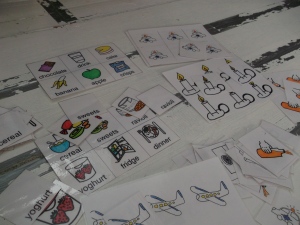 Autistic children have good visual-spatial awareness and it is generally assumed that they therefore enjoy doing things based on these skills such as jigsaws. Dylan, however, doesn’t show any enthusiasm or particular ability for jigsaws. I have never been sure whether this is because he finds them difficult or because he finds them boring; although mostly Dylan doesn’t complete jigsaws, sometimes he surprises me by showing that he can. Actually I’m with Dylan on this one; I’ve always found jigsaws fairly pointless. Nonetheless I scheduled them in Dylan’s home learning programme because I thought I should. On reflection it was a waste of time; there were plenty of other things we could have been doing. Some of the activities I did (and still do) with Dylan which develop his visual-spatial skills and which he enjoys include:
Autistic children have good visual-spatial awareness and it is generally assumed that they therefore enjoy doing things based on these skills such as jigsaws. Dylan, however, doesn’t show any enthusiasm or particular ability for jigsaws. I have never been sure whether this is because he finds them difficult or because he finds them boring; although mostly Dylan doesn’t complete jigsaws, sometimes he surprises me by showing that he can. Actually I’m with Dylan on this one; I’ve always found jigsaws fairly pointless. Nonetheless I scheduled them in Dylan’s home learning programme because I thought I should. On reflection it was a waste of time; there were plenty of other things we could have been doing. Some of the activities I did (and still do) with Dylan which develop his visual-spatial skills and which he enjoys include:
- Matching games. It is easy to make lotto games of objects which your child is particularly interested in or of new vocabulary which you want to teach. While this isn’t about ‘shape’ as such, it is about pattern recognition which involves the same cognitive processes.
- Flash cards. A deck of cards is tactile and comforting; you can shuffle, sort, browse, deal, distribute, drop, pick-up, check, lose, duplicate and throw away. So many wonderful possibilities. Dylan liked cards. I probably didn’t exploit this interest as much as I could have.
- Found shapes. As a writer I love to stumble on poems which exist without having been written: the found poems we encounter if we keep our hearts and minds open. And shapes are even easier to find than poems; food is a great place to look (I’ve already mentioned Toblerone) as is the great outdoors. I am currently working on pointing shapes out to Dylan in the hope he might make the links between them and recognise the abstract concept of ‘triangle’ as something which applies equally to a piece of chocolate and a road sign.
d) nursery rhymes and singing
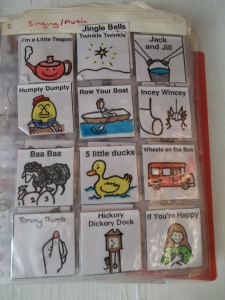 Some of Dylan’s most effective exposure to language has been through musical resources; I suspect this is because nursery rhymes and songs use devices such as chorus and repetition which create the pattern and structure which Dylan responds to. Although Dylan has an ambiguous relationship with singing due to his auditory sensitivity (I have written about this here and here) music has been one of the most important things in his life and seems increasingly significant as he gets older.
Some of Dylan’s most effective exposure to language has been through musical resources; I suspect this is because nursery rhymes and songs use devices such as chorus and repetition which create the pattern and structure which Dylan responds to. Although Dylan has an ambiguous relationship with singing due to his auditory sensitivity (I have written about this here and here) music has been one of the most important things in his life and seems increasingly significant as he gets older.
Nursery rhymes and singing are used in early years education not just because of their intrinsic value but as a vehicle for learning. They can support the development of pre-lingual skills such as turn-taking and imitation as well as developing social awareness (for example emotional understanding) and cognitive knowledge (for example in relation to literacy and numeracy). While I realise this raises issues around age-appropriate activities (which I have reflected on here) I continue to engage Dylan through nursery rhymes and singing on a daily basis. Some approaches which I have found particularly useful include:
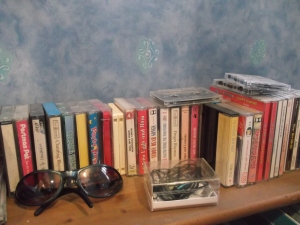 Making compilations of nursery rhymes and songs for Dylan on key themes to support specific learning (e.g. ‘parts of the body’ or ‘counting’)
Making compilations of nursery rhymes and songs for Dylan on key themes to support specific learning (e.g. ‘parts of the body’ or ‘counting’)- Putting nursery rhymes on Dylan’s i-pod so that he can listen to them privately and when out and about in the community (I have written more about this here)
- Encouraging Dylan to listen to nursery rhymes as part of a bed time routine (I think Dylan has learned a lot from his years of routine listening)
- ‘Embodying’ nursery rhymes through actions: some of Dylan’s favourite nursery rhymes, and the ones he seems to learn most from, are those with accompanying actions.
- Exaggerating actions to nursery rhymes in order to emphasise communicative purpose.
- Making changes to the words of familiar nursery rhymes so that Dylan accesses meaning as well as sound. My daughter, for example, changed ‘one potato, two potato’ into ‘one banana, two banana’ one day, changing the shape of her hand from a fist to a flat curve. Dylan found this hilarious and still enjoys changing potato to banana.
- Exaggerating singing of nursery rhymes in order to emphasise features of language such as stress, intonation, tone and pitch.
Final reflection: the importance of language
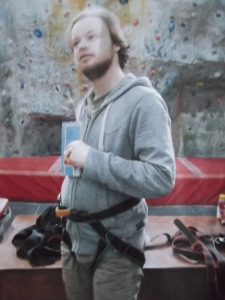 What makes the education system fundamentally inaccessible for many children is the role of language in the delivery of the curriculum. A key challenge for parents and educators is therefore how to make learning accessible for children who do not speak or use an alternative communication system. Dylan is currently developing some echolalic speech but for the majority of his life, and throughout his schooling, has been classed as ‘non-verbal’. It is perhaps not surprising that so many of the suggestions in this post focus on language development; it is in its potential for adaptations to language, I suspect, that a home learning programme may be of particular value.
What makes the education system fundamentally inaccessible for many children is the role of language in the delivery of the curriculum. A key challenge for parents and educators is therefore how to make learning accessible for children who do not speak or use an alternative communication system. Dylan is currently developing some echolalic speech but for the majority of his life, and throughout his schooling, has been classed as ‘non-verbal’. It is perhaps not surprising that so many of the suggestions in this post focus on language development; it is in its potential for adaptations to language, I suspect, that a home learning programme may be of particular value.
Reference:
Desforges P. and Aboucher, A. (2003) The Impact of Parental Involvement, Parental Support and Family Education on Pupil Achievement and Adjustment: A Literature Review. Queen’s Printer: Exeter
Images:
The images of Owl Babies and the Toblerones are from Wikipedia. The opening photograph of Dylan reading Postman Pat was taken during a holiday in France in the late 90s, at the time of Dylan’s home education programme. The closing photograph of Dylan at a climbing centre (holding a copy of Pinocchio) was taken just before Christmas 2014.
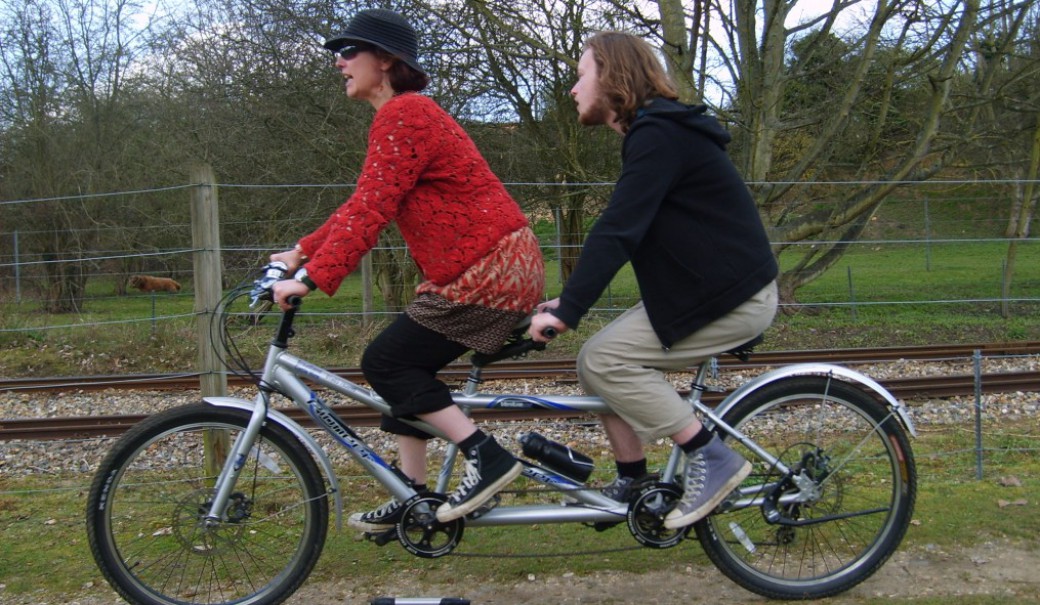

Pingback: Education-Based Intervention In Autism: Dylan’s home learning programme | Living with Autism
I can’t help thinking how much Dylan’s experienced must have been enriched by having a mother who is an educator. I would guess that your profession has, in turn, been greatly influenced by the experience of working through his challenges.
LikeLike
That’s a heartening reflection Anna. Thank you. I have sometimes wondered what sort of a teacher I’d be (in the workplace I mean) if I hadn’t had Dylan. But that’s usually triggered by thoughts of parenthood generally rather than by parenting a disabled child. For some time I’ve had this idea that becoming parents changes us as professionals (whatever we do for a living). Recently, not happy with the service I was getting with something, I asked if I could have a different advisor and requested: ‘someone a bit older, preferably with children’! I couldn’t believe my own request 🙂 But, yes, I have sometimes been glad of my professional background. And reading your comment has reminded me that when Dylan was five or six years old I seriously considered retraining as a speech and language therapist, partly in order to support Dylan and partly because he had opened my eyes. The mother/professional hyphen is so rich!
LikeLiked by 1 person
Yes yes yes! My Master’s degree is in Adult Education, and one of the observations I made in my thesis was exactly that– that the experience of mothering influenced who I was as a learner, as an educator, and even as a policy maker. My youngest sister would definitely tell you it changed who she is as a prosecutor.
LikeLiked by 1 person
Am sure there is an interesting book/project in this 🙂
LikeLike
Hi Liz, Thanks for the post a very thorough breakdown of what works and what doesn’t for Dylan. Sometimes it is so hard to find ways to teach children with autism as they are all so different. I certainly need to put some time into finding the ways to unlock certain areas of the curriculum for my daughter. Maths in particular can be a struggle, I am never sure if it just not her thing or the way her brain interprets the numbers. It can be really frustrating to teacher her when she expects to get everything right first time and has a meltdown if she can’t. I know I am certainly not cut out to be an educator! Happy 2015 to you, looking forward to more posts. Tinc
LikeLike
Hi Tinc – good to hear from you and happy new year to you too. I agree about how individual a process education is for children with an ASC. I really have no idea how teachers manage this in busy education settings. I can relate to your daughter’s frustration at not getting things right first time – I sometimes wonder whether this sort of perfectionism is part of the ‘Aspie’ end of the spectrum and can lead some young people and adults to give up rather than get something ‘wrong’. I’m a bit like that myself 🙂
LikeLiked by 1 person
Pingback: Shredding Pinocchio | Living with Autism
Pingback: What Difference Did It Make? Reflections on autism and early intervention | Living with Autism